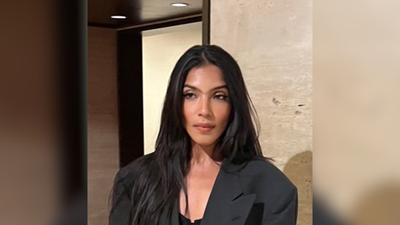ARTICLE AD BOX

When Zohran Mamdani pulled off one of the biggest political upsets in recent New York history—defeating former governor Andrew Cuomo and becoming the city’s first Muslim and South Asian mayor—the focus quickly turned to his charisma and youth-driven appeal.
But behind the scenes, another story was unfolding: that of Zara Rahim, a University of Central Florida graduate whose voice and vision helped define the campaign’s tone and strategy.For Rahim, now 35, Mamdani’s victory wasn’t just a political win—it was the culmination of a decade-long journey that began in Florida classrooms and took her through the corridors of the White House, the offices of Vogue magazine, and into the heart of one of the most diverse cities in the world.
From Florida classrooms to a national calling
Rahim grew up in South Florida, the daughter of Bangladeshi immigrants who had made their home in one of America’s most multicultural corners. At the University of Central Florida, she majored in communications—a choice that reflected her fascination with how stories move people, shape opinions, and build communities. It was during these years that she realized the power of technology to change how those stories were told.
Friends from college remember her as thoughtful but driven—someone who could talk about politics and pop culture in the same breath. That mix of civic interest and cultural fluency would become her signature in the years to come.
The Obama campaign and a crash course in digital politics
In 2012, Rahim joined Barack Obama’s re-election campaign as an intern, a foot in the door that quickly became a full-fledged role as Florida Digital Content Director. Her task was simple but massive: reach young, first-time, and minority voters online and convince them to participate.Her knack for translating political messages into relatable, visual, and human stories made her stand out. When the campaign ended, Rahim was invited to join the White House Office of Digital Strategy, where she helped manage online communication for one of the most digitally innovative presidencies in U.S. history.
Moving between politics and culture
After the White House, Rahim entered the corporate world with Uber, helping navigate the complex public debates that came with the company’s rapid growth.
The experience gave her a firsthand view of how narratives could shape public policy.Then came Hillary Clinton’s 2016 presidential campaign, where Rahim once again found herself at the center of a major political moment. But when the campaign ended, she made an unexpected move—into fashion. As Communications Director at Vogue magazine, she shifted from political messaging to cultural storytelling, working alongside some of the world’s most influential artists, designers, and activists.For Rahim, this wasn’t a departure—it was an expansion. “Politics is culture,” she has often said, and her years at Vogue only reinforced that connection.
A strategist for the modern era
In the years that followed, Rahim built a career as an independent consultant, advising major cultural players like A24, Mariah Carey, and Netflix. Whether helping a brand tell its story or a public figure connect with an audience, her approach remained the same: start with authenticity, not optics.So when Zohran Mamdani began his mayoral run in early 2025, Rahim’s involvement felt almost inevitable. As his senior adviser, she urged the campaign to abandon the conventional “New York politician” script and focus on the real New York—its neighborhoods, its languages, its working-class families.Videos of Mamdani greeting residents in Spanish, Hindi, and Bengali spread quickly online, but Rahim made sure the campaign’s digital virality was matched by deep, in-person engagement.
Volunteers knocked on more than 1.6 million doors, and many of those conversations were with voters who had never before been asked for their voices.
Redefining what political communication means
When former governor Andrew Cuomo made remarks that Mamdani’s supporters saw as Islamophobic, Rahim’s quick and confident response—calling the comments “a desperate tactic from a man with nothing to say to Muslim people”—captured both the campaign’s clarity and its refusal to back down.By the time Mamdani declared victory, the campaign had grown into a citywide movement powered by nearly 90,000 volunteers. Rahim’s influence could be felt in its tone: grounded, inclusive, and unfiltered.Following the win, Mamdani named an all-female transition team that included Rahim alongside prominent figures such as Lina Khan and Maria Torres-Springer. For Rahim, it marked a return to public service—this time as part of a historic administration.
From UCF to City Hall
Zara Rahim’s path from the University of Central Florida to New York City Hall reads like a case study in how communication has evolved in modern politics. She has moved fluidly between institutions—government, corporate, and cultural—always finding ways to bridge them through narrative.Her story also mirrors the changing face of American leadership: diverse, interdisciplinary, and deeply attuned to the stories that unite people across backgrounds. As Mamdani prepares to take office in January 2026, Rahim’s journey stands as proof that education in communication isn’t just about messaging—it’s about understanding people.

 1 hour ago
3
1 hour ago
3








 English (US) ·
English (US) ·